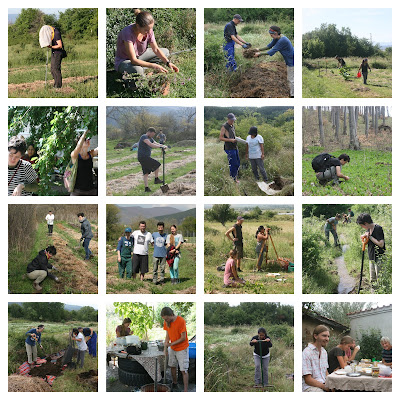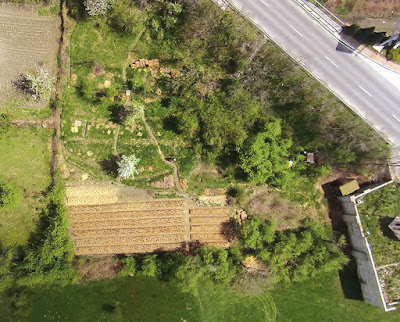In this post you will find an overview of the trial garden and the polycultures we are growing, a description of what we record and the 4th year results from the trial. You can find results from previous seasons here.
It was a great a mix of people from all over the world including university students, a crypto fund manager, ex-nintendo web editor and market gardeners. Thank you all for your valuable input, it was our pleasure to host you and we look forward to seeing you again some day.
 |
| The Polyculture Study 2018 Team |
GARDEN OVERVIEW
Climate: Temperate
Köppen Climate Classification – Dfc borderline Cfb
USDA Hardiness Zone: 5b – 7a
Latitude: 42°
Elevation: 565 m
Average Annual Rainfall: 588.5 mm
Prevailing Wind: NW & NE
Garden Name: Aponia – Polyculture Market Garden
 |
| The six longer beds in the left hand corner of the photo on the right (the Aceaes) are the trial beds, the focus of this study.You can find the location of the Polyculture Market Garden on google maps here (labelled as Aponia on our Project map) |
Garden area: 256.8 m2
Cultivated beds area: 165.6 m2
Paths: 50 cm wide – 91.2 m2
Bed Dimensions – 23 m x 1.2 m Area – 27.6 m2 per bed
Number of beds: 6
…click on the above link to read the rest of the article…










